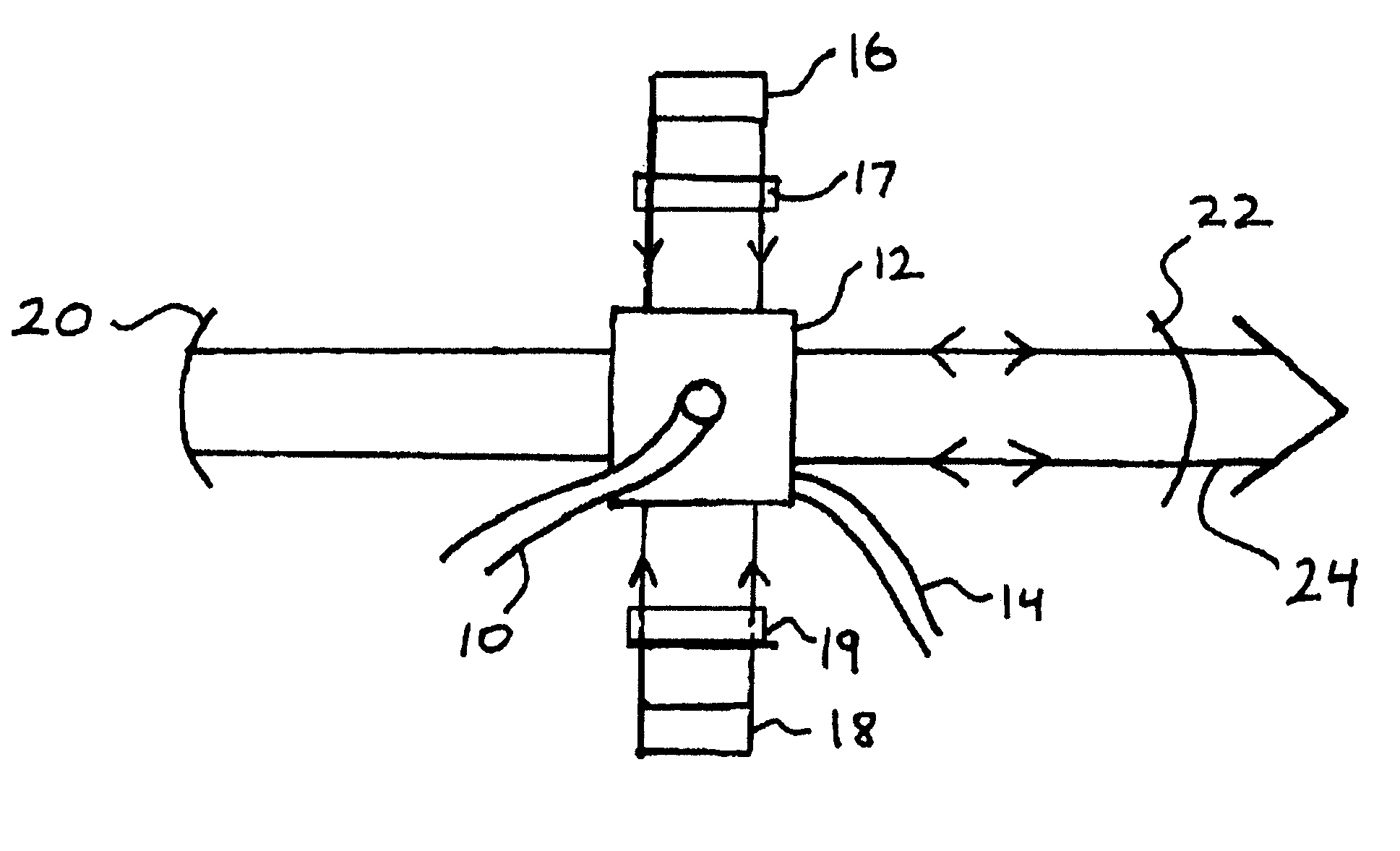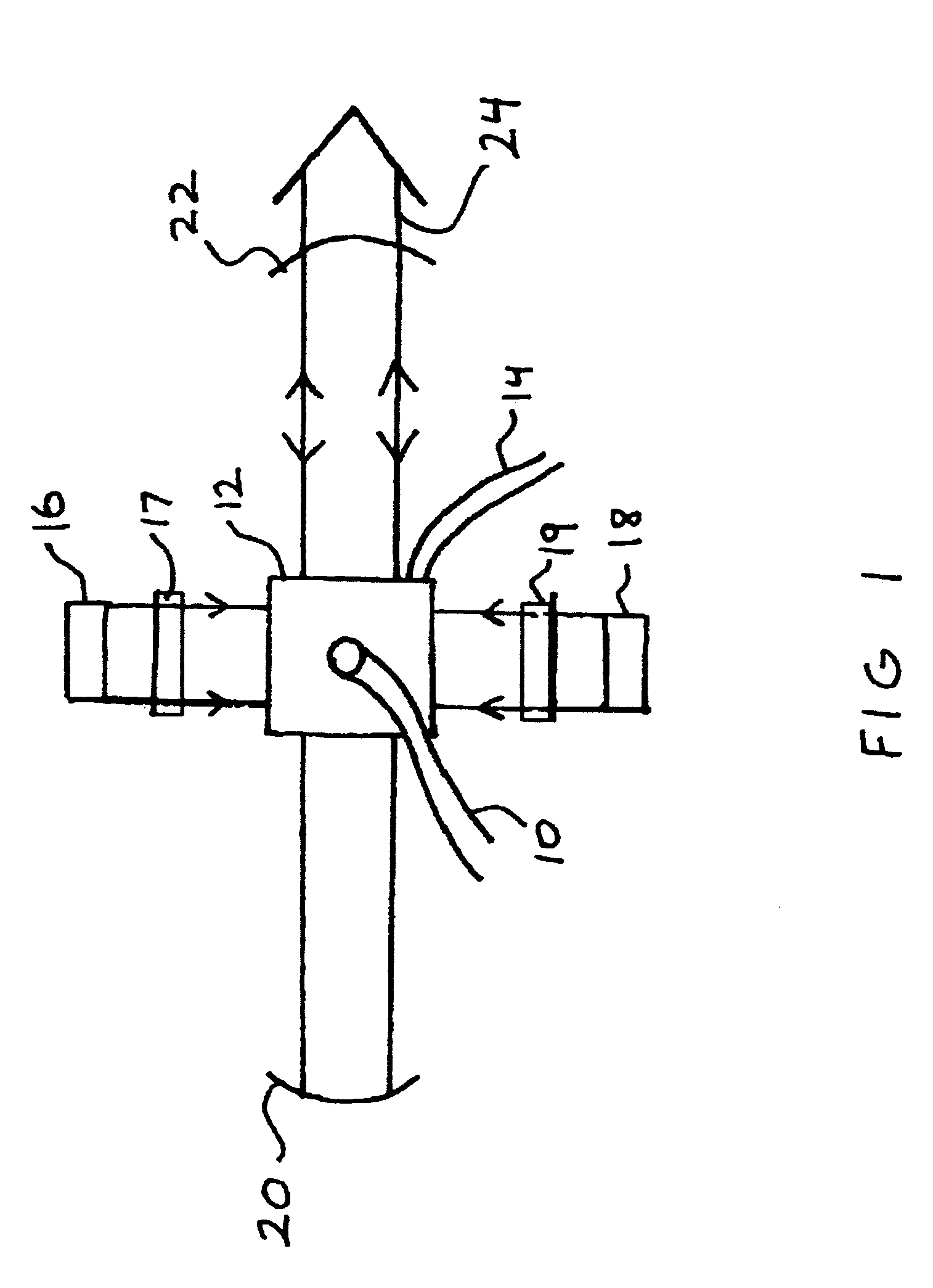Liquid heat capacity lasers
a heat capacity laser and liquid heat technology, applied in the direction of laser cooling arrangements, laser details, active medium materials, etc., can solve the problems of severe limitation of the need to reject a sizable amount of waste heat, etc., to reduce thermal gradients, limit the optical quality of the laser media, and the effect of independent heat capacity run tim
- Summary
- Abstract
- Description
- Claims
- Application Information
AI Technical Summary
Benefits of technology
Problems solved by technology
Method used
Image
Examples
Embodiment Construction
[0017] In the present liquid heat capacity laser, the laser active liquid is circulated from a reservoir (where the bulk of the media and hence waste heat resides) through a channel so configured for both optical pumping of the media for gain and for light amplification from the resulting gain. The pumping is frequently done by (but not exclusively by) arc lamps, flash lamps, and laser diodes. The amplification may occur in the form of a laser oscillator or a laser amplifier. The pumping and lasing processes result in waste heat being deposited in the liquid media and a rise in the reservoir temperature over the run time of the laser. After lasing, the liquid media can be cooled back down to the start temperature at a slower rate than the heating rate by a refrigeration unit consequently smaller and drawing less power than a unit built to maintain the lasing media temperature while lasing. If time permits, even passive cooling could be utilized. For a lasing time of A and a dwell ti...
PUM
 Login to View More
Login to View More Abstract
Description
Claims
Application Information
 Login to View More
Login to View More - R&D
- Intellectual Property
- Life Sciences
- Materials
- Tech Scout
- Unparalleled Data Quality
- Higher Quality Content
- 60% Fewer Hallucinations
Browse by: Latest US Patents, China's latest patents, Technical Efficacy Thesaurus, Application Domain, Technology Topic, Popular Technical Reports.
© 2025 PatSnap. All rights reserved.Legal|Privacy policy|Modern Slavery Act Transparency Statement|Sitemap|About US| Contact US: help@patsnap.com



